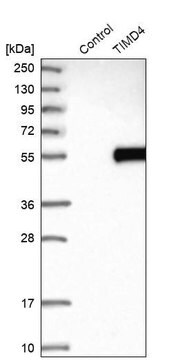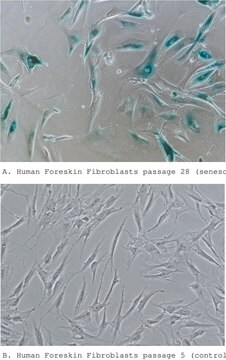MABC958
Anti-TIM4/TIMD-4 Antibody, clone Kat5-18
clone Kat5-18, from hamster(Armenian)
Synonym(e):
T-cell immunoglobulin and mucin domain-containing protein 4, TIMD-4, Spleen, mucin-containing, knockout of lymphotoxin protein, SMUCKLER, T-cell immunoglobulin mucin receptor 4, TIM-4, T-cell membrane protein 4, TIM4/TIMD-4
About This Item
Empfohlene Produkte
Biologische Quelle
hamster (Armenian)
Qualitätsniveau
Antikörperform
purified immunoglobulin
Antikörper-Produkttyp
primary antibodies
Klon
Kat5-18, monoclonal
Speziesreaktivität
mouse
Methode(n)
flow cytometry: suitable
neutralization: suitable
Isotyp
IgG
NCBI-Hinterlegungsnummer
UniProt-Hinterlegungsnummer
Versandbedingung
dry ice
Posttranslationale Modifikation Target
unmodified
Angaben zum Gen
mouse ... Timd4(276891)
Allgemeine Beschreibung
Immunogen
Anwendung
Apoptose & Krebs
Apoptose - Weiterführende Produkte
Flow Cytometry Analysis: Representative lots were conjugated with biotin and detected Tim4 immunoreactivity among mouse Mac1+ peritoneal cells (Miyanishi, M., et al. (2012). Int. Immunol. 24(9):551-559; Miyanishi, M., et al. (2007). Nature. 450(7168):435-439).
Neutralizing Analysis: A representative lot blocked Tim4-mediated engulfment of apoptotic CAD-/- thymocytes by murine peritoneal macrophages in a dose-dependent manner in culture (Miyanishi, M., et al. (2007). Nature. 450(7168):435-439).
Neutralizing Analysis: A representative lot, when administered via i.v. injection, significantly suppressed the phagocytosis activity of F40/80+ macrophages in the thymus of CAD-/- mice following intraperitoneal dexamethasone injection to induce apoptosis in the thymus (Miyanishi, M., et al. (2007). Nature. 450(7168):435-439).
Qualität
Flow Cytometry Analysis: 0.1 µg of this antibody detected TIM4/TIMD-4 in Ba/F3-Tim4 cells overexpressing mouse Tim4.
Zielbeschreibung
Physikalische Form
Lagerung und Haltbarkeit
Handling Recommendations: Upon receipt and prior to removing the cap, centrifuge the vial and gently mix the solution. Aliquot into microcentrifuge tubes and store at -20°C. Avoid repeated freeze/thaw cycles, which may damage IgG and affect product performance.
Sonstige Hinweise
Haftungsausschluss
Sie haben nicht das passende Produkt gefunden?
Probieren Sie unser Produkt-Auswahlhilfe. aus.
Lagerklassenschlüssel
12 - Non Combustible Liquids
WGK
WGK 2
Flammpunkt (°F)
Not applicable
Flammpunkt (°C)
Not applicable
Analysenzertifikate (COA)
Suchen Sie nach Analysenzertifikate (COA), indem Sie die Lot-/Chargennummer des Produkts eingeben. Lot- und Chargennummern sind auf dem Produktetikett hinter den Wörtern ‘Lot’ oder ‘Batch’ (Lot oder Charge) zu finden.
Besitzen Sie dieses Produkt bereits?
In der Dokumentenbibliothek finden Sie die Dokumentation zu den Produkten, die Sie kürzlich erworben haben.
Unser Team von Wissenschaftlern verfügt über Erfahrung in allen Forschungsbereichen einschließlich Life Science, Materialwissenschaften, chemischer Synthese, Chromatographie, Analytik und vielen mehr..
Setzen Sie sich mit dem technischen Dienst in Verbindung.







